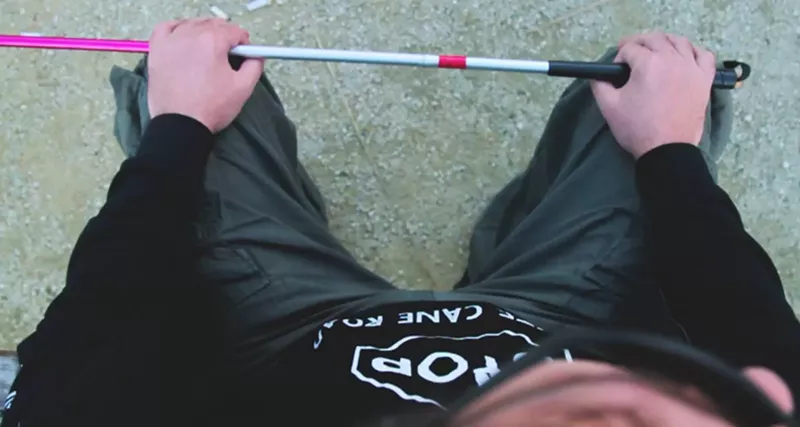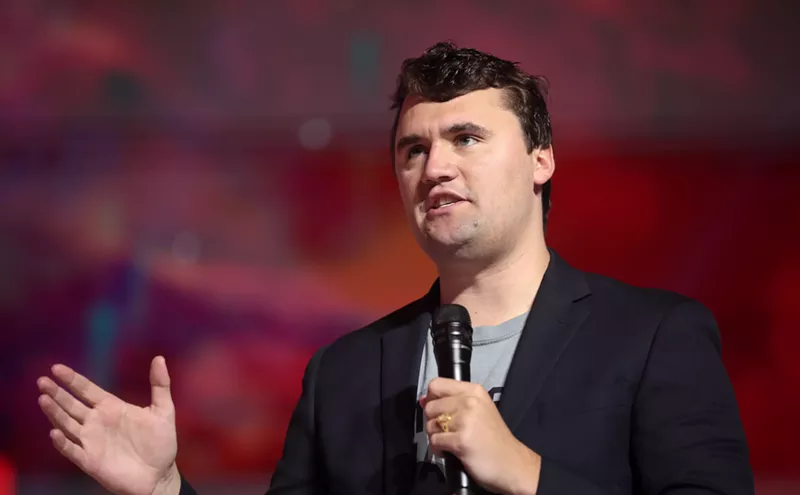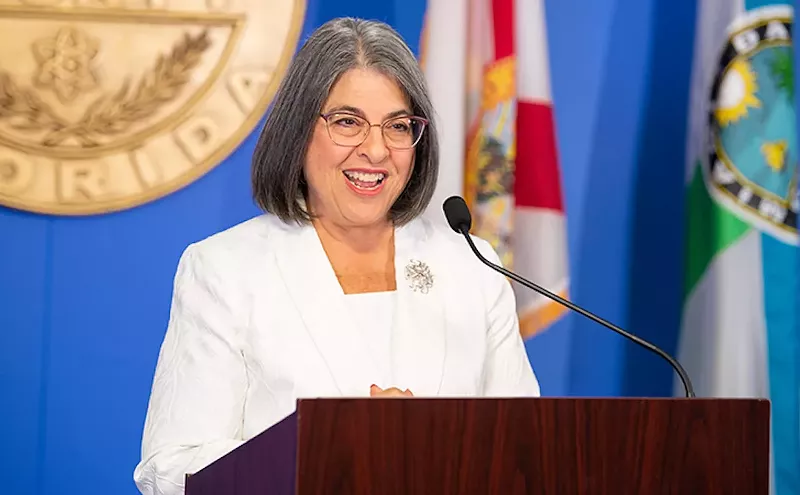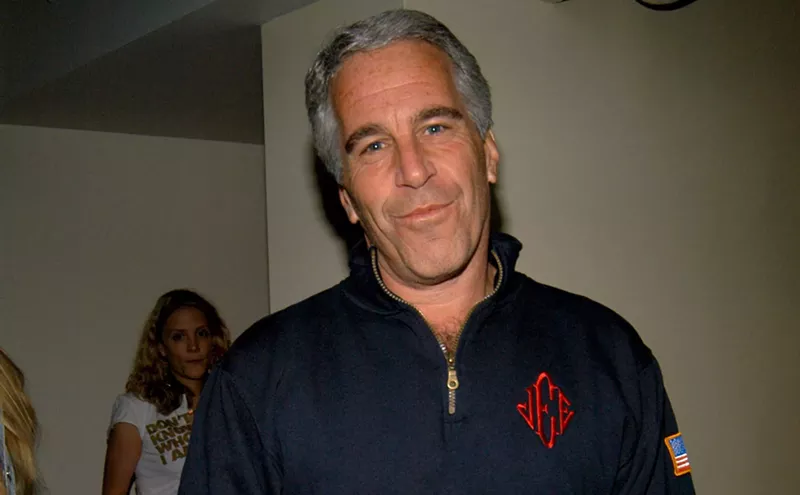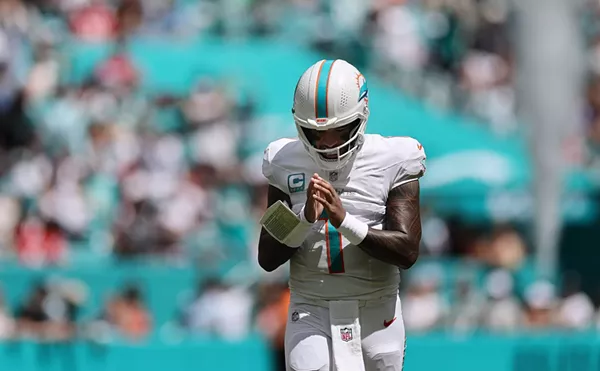For hours, Hurricane Irma's winds battered Jorge Hernandez's house in Flagami. Days earlier, he had mounted accordion shutters as a precaution, but now the metal clanged violently against his windows. Petrified, his fiancée and her 18-year-old daughter scrambled through the pitch-black darkness, but even as they got upstairs, they realized there was no escape. The sound reverberated on every floor.
"I was OK, though," Hernandez says. "I can manage around our house without lights, no problem." When Hernandez was 9, doctors diagnosed him with retinitis pigmentosa, a rare condition in which the back of the eye is permanently damaged. Since then, the 51-year-old technology instructor from Cuba has learned to live without eyesight.
Days before the storm hit, Miami-Dade County offered beds in special-needs shelters, emergency transportation services, and nonperishable food to its citizens with disabilities. Even so, the majority of the county’s estimated 67,000 blind or visually impaired residents opted to ride out the storm at home, either alone or with loved ones. Blindness can be an especially difficult disability during a catastrophic storm, so many prepared days in advance, stocking up on supplies and reaching out to their communities for help. Though streets flooded and power was lost, Miami’s blind say they fared reasonably well during the storm, avoiding injury and weathering Irma’s wrath.
When Irma was churning in the Atlantic, 55-year-old Denise Valkema from Kendall heard about the storm while listening to a weather update on her iPhone. “I didn’t need to see the cone to understand that we were in the cone,” says Valkema, who decided to stay at home. "With the proper tools, we can do anything, but with blindness, things just need to be done in a different way."
As president of the National Federation of the Blind of Florida, Valkema instructed her members to stay connected with a support network, such as a church or neighborhood organization, and to ask for help when needed. Valkema, who is blind, asked a neighbor to help her cover a leaky roof with a tarp before the storm. "A lot of times, it's about asking for assistance," she says. "You can't be a shut-in."
With preparation, Valkema says, blind people can be independent during a natural disaster. Days before the storm, the county advised civilians to stock up with at least 72 hours' worth of food and water. It was a manageable task even for a person without sight, says Valkema, who quickly called an Uber and stocked up at her local Publix. "It doesn't matter if you're blind, elderly or if you just don't have friends in the area; we need to make more of an effort instead of doing things last-minute," she says.
Those who waited out the hurricane agree.
Twelve miles away in Flagami, Hernandez first heard about the storm five days before it made landfall. Frantic, he notified his parents, who live nearby, and called his brother, who owned a house in Marathon, a city deep in the Florida Keys. "I was scared," Hernandez says. "I wanted them to be safe."
Though Hernandez survived Hurricane Andrew in 1992, he knew that Irma, one of the strongest storms in history, was in a different league. The next day, he dragged his fiancée and her daughter to the grocery store to buy a week's worth of canned tuna and Vienna sausages. "It was hard trying to get water," he says, "Literally, none was to be found in Miami." Coming home, he boarded up the windows and shoved a hurricane kit in the bedroom closet. "I was in charge of making sure we could get to the flashlights quickly," he says.
In spite of their preparation, the house lost power when Irma hit Sunday morning. Of the three, Hernandez was best prepared to navigate a blackout, but even he couldn't brush away the fear when floodwater began seeping beneath the front door. "Every hour, we had to run into the living room to mop it up," he says.
The next morning, the storm passed. Rattled, Hernandez and his fiancée rushed outside to assess the damage. Scanning the backyard, she confirmed only part of their fence was destroyed. "We were lucky," he says. His family members weren't as fortunate. A hundred miles south, Hernandez's brother's house in Marathon was five feet deep in floodwater, lost beyond repair. "I got teary-eyed," Hernandez whispers. "The whole family visited that house many times."
Perhaps most tested by the storm was Joanne Carswell, a 64-year-old former physical therapist aide from Coconut Grove, who says she's still reeling from the damage Irma wrought.
In 2009, failed knee-replacement surgery caused Carswell to lose function in her left knee. Meanwhile, her right knee struggled with arthritis. With barely one functional leg and major vision loss, Carswell called Special Transportation Services and fled to her friend's house the Friday before the storm. Unfortunately, her friend, Bernadette, though not visually impaired, was also wheelchair-bound and, to make matters worse, asthmatic.
Throughout the weekend, the two swayed to the soothing sounds of gospel music and comedy shows. Then the storm came. As houses throughout the city lost power, Bernadette's air conditioner began to sputter. As the heat and humidity grew, Bernadette began to hack violently. "Even though she had an oxygen machine, she couldn't catch her breath and had to sit up," Carswell says. "She kept saying, 'Help, Joanne, help.'"
Five years earlier, Carswell's nephew had died of an asthma attack. She knew she wouldn't be able to help Bernadette in case of an emergency. "I was so scared," she says.
Two days after the storm passed, Carswell returned safely home. Besides the spoiled food in her fridge and the felled trees in her backyard, she found little damage to her house. She later discovered that Bernadette was admitted to the hospital due to respiratory problems that day. Even so, Carswell says she doesn’t blame anyone for the challenges she experienced staying at home.
“FPL, Comcast, the county, and the city, everybody worked so hard,” says Virginia Jacko, president of Miami Lighthouse, a sanctuary for the visually impaired. “They could only do what was humanly possible.” Even though the county’s blind and visually impaired were offered help getting to shelters, she says many refused. “Blind people do things by habit — by touch — so a new routine, like going to a shelter or being forced to take a new route, can be worrisome," she says.
Jacko notes that past studies have suggested that people with disabilities such as visual impairment might have worse experiences with trauma and stress after natural disasters. Because 80 percent of her clients live alone, Jacko says isolation was a major concern. Even so, she says most of her clients have checked in to say they survived the storm without too much inconvenience. "When you're blind, you're used to seeing in the dark, and here we teach our clients how to use other senses in different environments," she says.
If anything, Hernandez says the aftermath of Irma has been more difficult to navigate. Just a few days ago, he was walking to a Walgreens near his workplace when he noticed with his cane that the sidewalk was littered with fallen trees and debris. "It was so hard to walk around the trees," he says, chuckling. "It was like a little obstacle course."

Audio By Carbonatix
[
{
"name": "GPT - Billboard - Slot Inline - Content - Labeled - No Desktop",
"component": "22004575",
"insertPoint": "2",
"requiredCountToDisplay": "2"
},{
"name": "STN Player - Float - Mobile Only ",
"component": "22595215",
"insertPoint": "2",
"requiredCountToDisplay": "2"
},{
"name": "Editor Picks",
"component": "17482312",
"insertPoint": "4",
"requiredCountToDisplay": "1"
},{
"name": "Inline Links",
"component": "18711090",
"insertPoint": "8th",
"startingPoint": 8,
"requiredCountToDisplay": "7",
"maxInsertions": 25
},{
"name": "GPT - 2x Rectangles Desktop, Tower on Mobile - Labeled",
"component": "23181625",
"insertPoint": "8th",
"startingPoint": 8,
"requiredCountToDisplay": "7",
"maxInsertions": 25
},{
"name": "Inline Links",
"component": "18711090",
"insertPoint": "8th",
"startingPoint": 12,
"requiredCountToDisplay": "11",
"maxInsertions": 25
},{
"name": "GPT - Leaderboard to Tower - Slot Auto-select - Labeled",
"component": "17720761",
"insertPoint": "8th",
"startingPoint": 12,
"requiredCountToDisplay": "11",
"maxInsertions": 25
}
]

